Don't like spiders? Here are 10 reasons to change your mind
Back in the past, in what now seems like a lifetime ago, I managed the Emergency Operations Centre for my local Ambulance Service which was housed in a single-storey building in the grounds of the Church Hospital, Oxford. One of my nicknames was 'Spiderman' because of my fondness for spiders.
The roof space of this building was home to a population of 'house spider' or Tegenaria domestica, a good-sized one of which can be 4 inches or more across its outstretched legs. They frequently paid us a visit by coming through the light fittings or round the edges of the aircon unit.
The house spider is well-named, being one of those commensal species that, like barn swallows, can't exist without human habitation and so must have evolved after we became settled and built permanent dwellings.
Despite its large fangs, it is entirely harmless to humans, even if it does manage to pierce the skin - something I tried to impress on my staff, whose first response to one running across the floor was to stamp on it.
Despite this reassurance, one of my assistants was so arachnophobic she refused to enter the room until the spider was gone - although what she thought it would do to her was a mystery, so one of my tasks was to gently catch the spider in my hands and put it outside, whereupon I would deliver my famous (or maybe infamous) spider talk, in which I explained why spiders are such fascinating creatures - their very long evolutionary history from a common ancestor with scorpions; their multiple eyes (some for binocular vision and some for detecting movement) and above all their amazingly engineered webs.
Orb web spiders like the common garden spider, Araneus diadematus, make two sorts of silk - one to act as scaffolding and the radial threads of the web and sticky one to form the circular strands. Each thread of silk consists of multiple fine filaments that stretch very quickly to catch a flying insect without it bouncing off, then recoil slowly to avoid throwing the insect free. All this is controlled by the fine molecular structure and electrostatic bonds between the filaments. The result is a thread that, weight for weight, is stronger than steel.
One small spider that is common on walls and buildings in Oxford is the zebra spider, Salticus scenicus, a tiny black and white-striped spider, only a few millimeters long, that has amazing eyes. It is a hunting spider that preys on small insects, even some three times its size, by jumping on them. Its modus operandum is to crawl over the surface of walls and roofs and, when it sees its prey, it approaches slowly and when close enough, judges the distance perfectly and pounces. It will also jump across gaps, again with a perfectly judged jump, many times its own body length, rather like a human jumping the Grand Canyon from a standing start, but before it does so, it dabs the tip of its abdomen down to fix a 'safety line' of silk, just in case. To perform these feats, the zebra spider needs a high degree of visual acuity and binocular vison. The amazing thing about this spider is the way it overcomes the problem for visual acuity of such a small retina; it rapidly moves the retina up and down, effectively increasing its size.
The jump is accomplished, not by muscles in the legs, but by a sudden increase in haemocoelic blood pressure which straightens the front and back legs, so the spider always jumps with its legs extended.
I always hoped my spider talk would impress my staff enough to take an interest in spiders rather than seeing them as creepy-crawly things to be half-feared and killed simply for sharing the building with us. Alas, only one or two ever followed my example and picked them up to put them out of a window.
All that was by way of introduction to an article in The Conversation in which Leanda Denise Mason, an Associate Lecturer, Curtin University, Australia give her ten reasons to like spiders, or at least change your mind it you don't. Her article is reprinted here under a Creative Commons licence, reformatted for stylistic consistency. The original can be read here.

Don’t like spiders? Here are 10 reasons to change your mind
Hostile reactions to spiders are harming conservation efforts
Credit: Karim Rezk/Flickr
Leanda Denise Mason, Curtin University
Australia is famous for its supposedly scary spiders. While the sight of a spider may cause some people to shudder, they are a vital part of nature. Hostile reactions are harming conservation efforts – especially when people kill spiders unnecessarily.
Populations of many invertebrate species, including certain spiders, are highly vulnerable. Some species have become extinct due to habitat loss and degradation.
In dramatic efforts to avoid or kill a spider, people have reportedly crashed their cars, set a house on fire, and even caused such a commotion that police showed up.
A pathological fear of spiders, known as arachnophobia, is of course, a legitimate condition. But in reality, we have little to fear. Read on to find out why you should love, not loathe, our eight-legged arachnid friends.
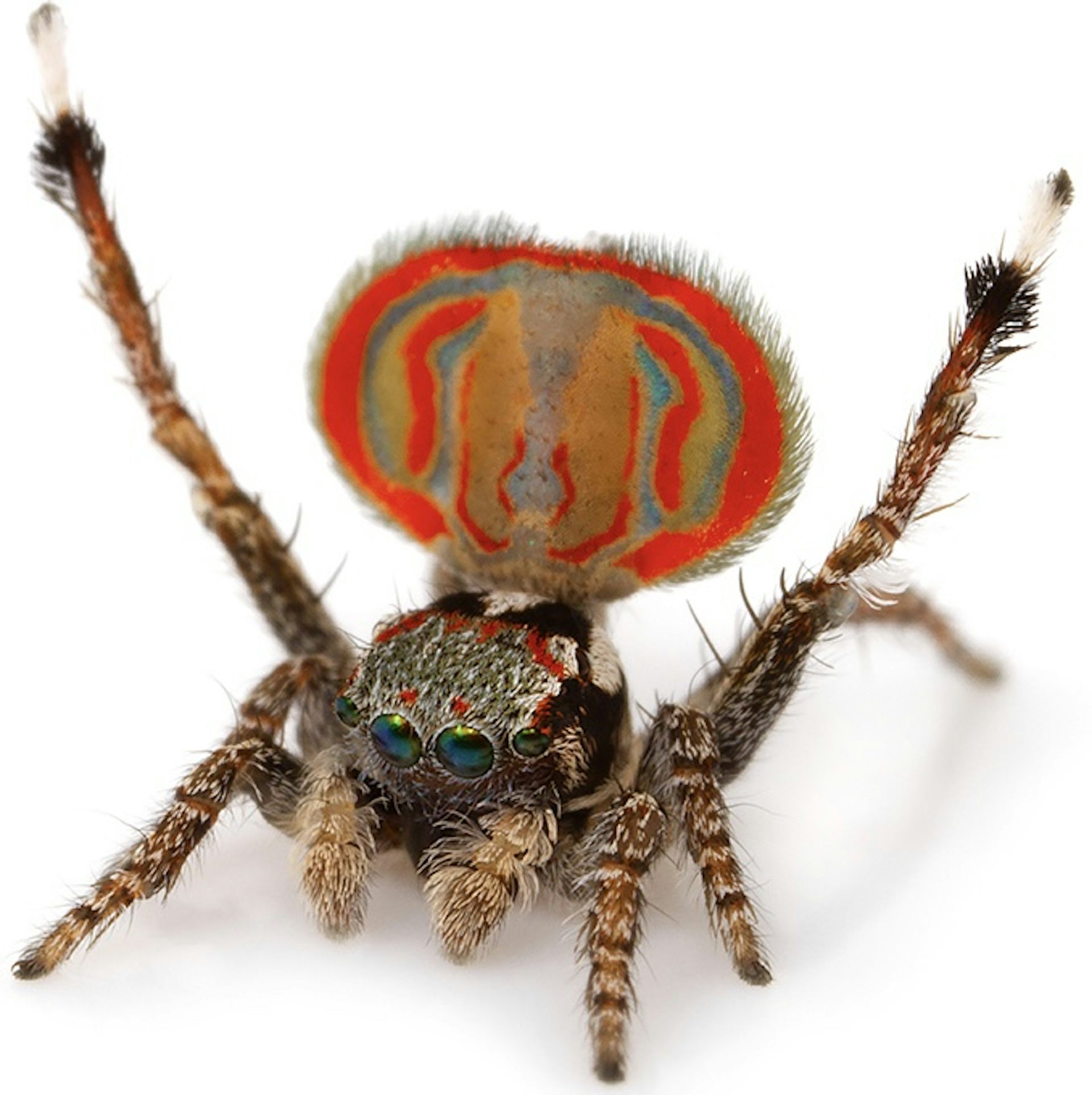
A male peacock spider. Spiders are a vital part of nature.
Credit: She's Got Legs/Caitlin Henderson
- Spiders haven’t killed anyone in Australia for 40 years
The last confirmed fatal spider bite in Australia occurred in 1979.
Only a few species have venom that can kill humans: some mouse spiders (Missulena species), Sydney Funnel-webs (Atrax species) and some of their close relatives. Antivenom for redbacks (Latrodectus hasseltii) was introduced in 1956, and for funnel-webs in 1980. However, redback venom is no longer considered life-threatening.
- Spiders save us from the world’s deadliest animal
Spiders mostly eat insects, which helps control their populations. Their webs – especially big, intricate ones like our orb weavers’ – are particularly adept at catching small flying insects such as mosquitos. Worldwide, mosquito-borne viruses kill more humans than any other animal.
- They can live to an impressive age
The world’s oldest recorded spider was a 43- year-old female trapdoor spider (Gaius villosus) that lived near Perth, Western Australia. Tragically a wasp sting, not old age, killed her.
- Spider silk is amazing
Spider silk is the strongest, most flexible natural biomaterial known to man. It has historically been used to make bandages, and UK researchers have worked out how to load silk bandages with antibiotics. Webs of the golden orb spider, common throughout Australia, are strong enough to catch bats and birds, and a cloak was once woven entirely from their silk.
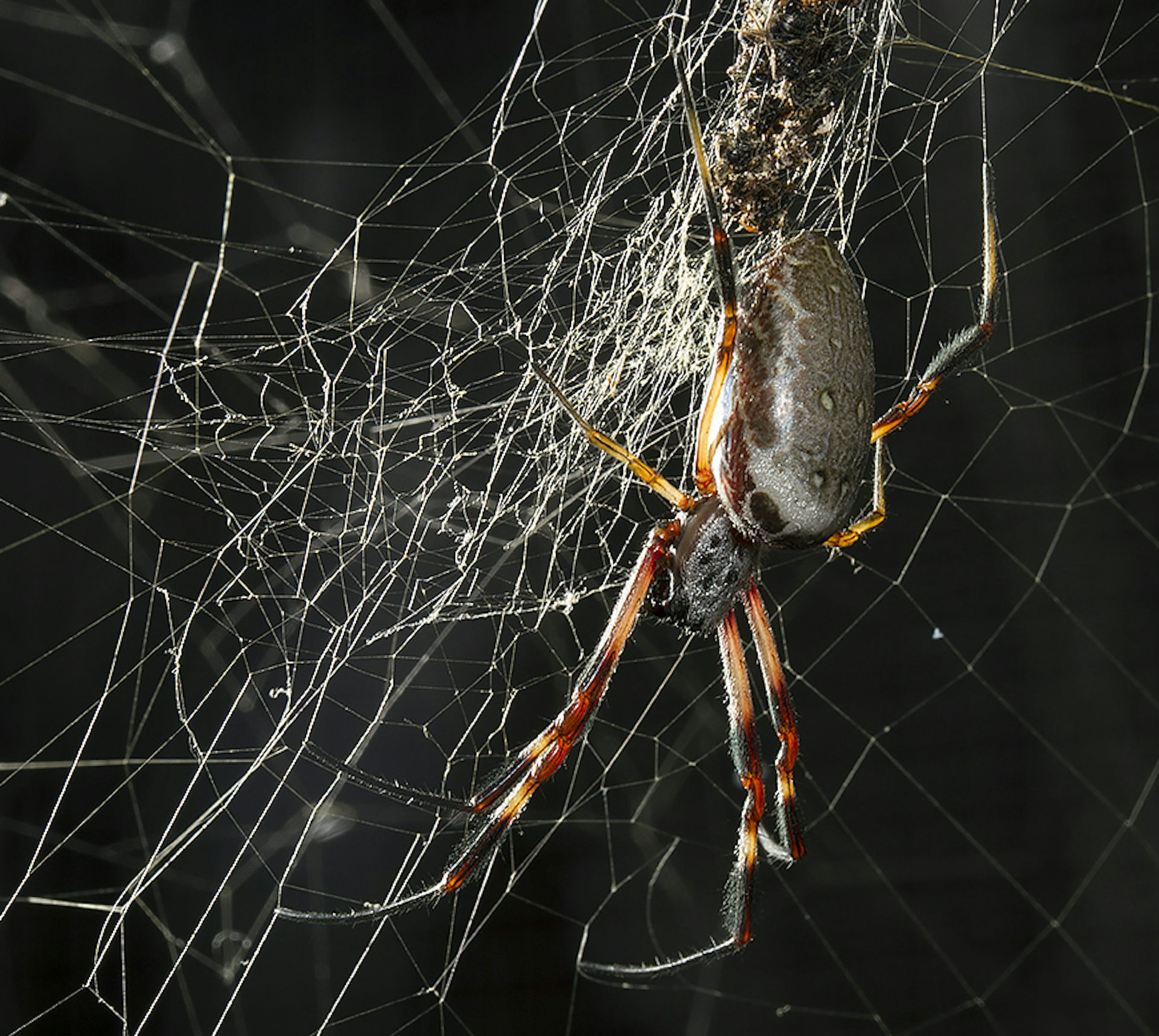 Golden orb weaver (Trichonephila edulis)Credit: Caitlin Henderson/She's Got Legs
Golden orb weaver (Trichonephila edulis)Credit: Caitlin Henderson/She's Got Legs - Their venom could save our life
The University of Queensland is using spider venom to develop non-addictive pain-killers. The venom rapidly immobilises prey by targeting its nervous system – an ability that can act as a painkiller in humans.
The venom from a Fraser Island funnel web contains a molecule that delays the effects of stroke on the brain. Researchers are investigating whether it could be administered by paramedics to protect a stroke victim on the way to hospital.
Funnel-web venom is also being used to create targeted pesticides which are harmless to birds and mammals.
- They could compete at Little Athletics
The Australian huntsman (Family Sparassidae) can run 40 body lengths per second, about eight times faster than the fastest human runners.
Other spiders have great throwing skills. To catch moths, the bolas spider spins a thread with a sticky glob of silk on the end. The glob mimics the scent of a female moth. When a male moth comes to investigate, the spider throws the glob at the moth, catches it then reels it in.
- Spiders want to be left alone
Spiders are not aggressive and will either try to run away from people, or defend themselves. Many are exceptional at hiding or camouflaging themselves, in the hope we don’t even see them.
Wrap-around spiders (Dolophones species) flatten themselves around branches to hide during the day, then come out to build webs at night.
Bird-dropping spiders hide by looking like, yes, bird-droppings.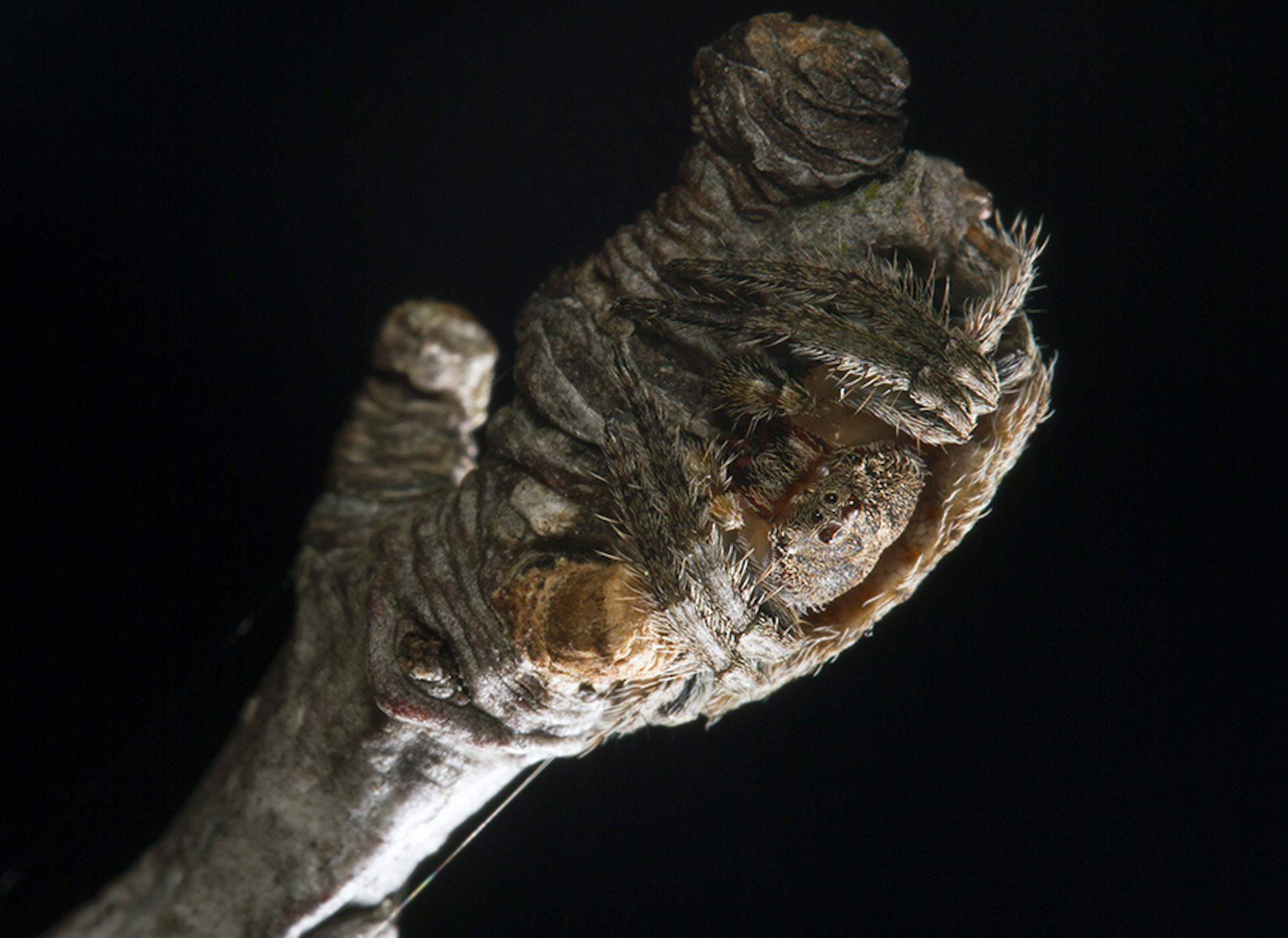 A wrap-around spider (Dolophones species) is a master of camouflage.Credit: Caitlin Henderson/She's Got Legs
A wrap-around spider (Dolophones species) is a master of camouflage.Credit: Caitlin Henderson/She's Got Legs
The Western Australian shield-back trapdoor spiders (Idiosoma species) uses its unusually hard abdomen to “plug” its tunnel when a predator enters, creating an impenetrable shield.
Trapdoor spiders live in burrows with a silken lid that shuts tight, then gets covered in dirt or leaf litter.
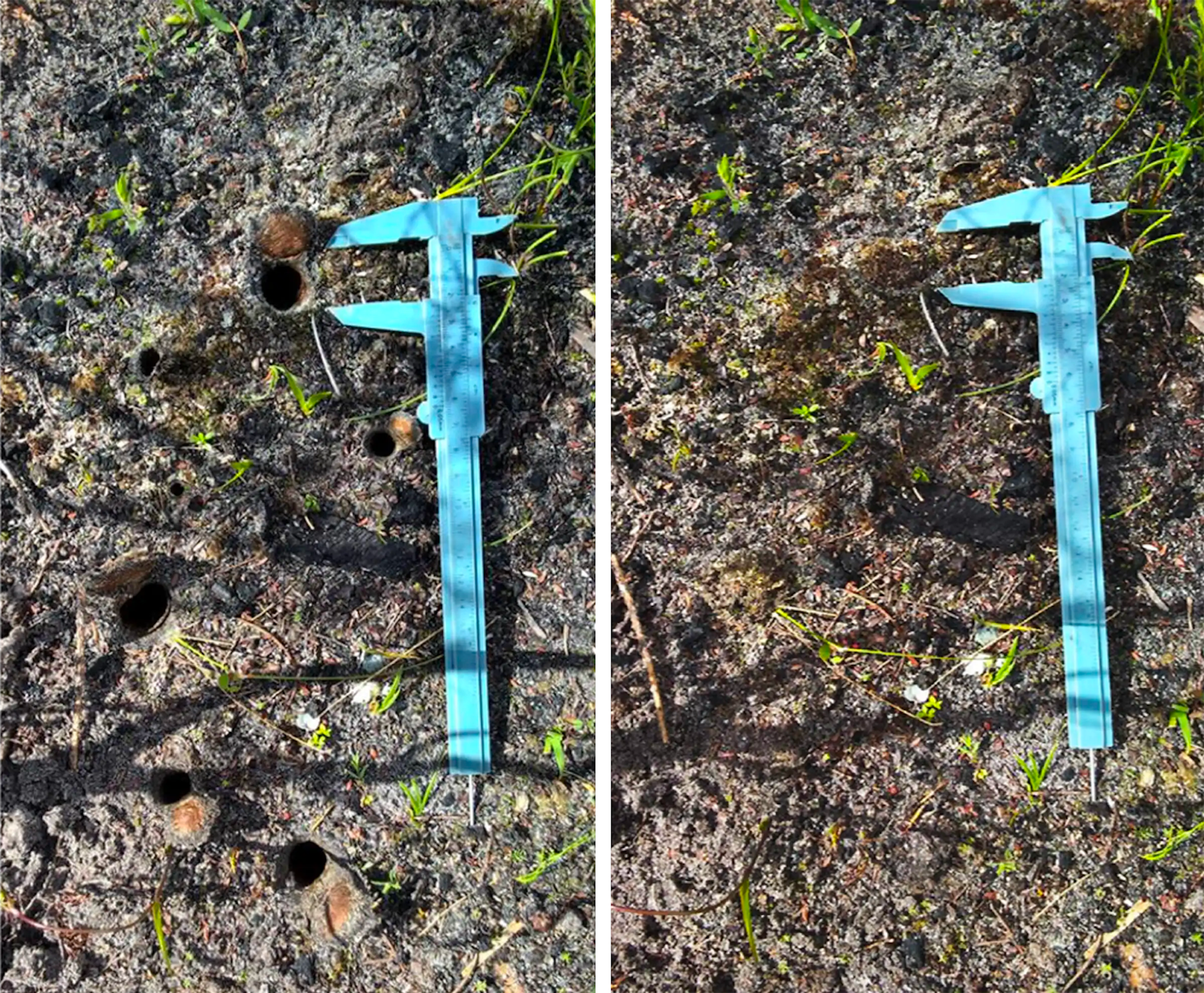 Trapdoor burrows of an Idiosoma species open (left) and closed (right)Credit: Author provided
Trapdoor burrows of an Idiosoma species open (left) and closed (right)Credit: Author provided - Spiders have very unusual sex lives
It’s well known that some female spiders eat their partners during or after sex. But male Tasmanian cave spiders have evolved to avoid this fate. They use kinks in their legs to pin the female’s fangs apart while they mate, which can prevent her from killing him. These spiders are so fascinating, they are the subject of a documentary, Sixteen Legs
More generally, male spiders use their “hands” (called pedipalps), to transfer sperm into female spider “vaginas” (called epigynes).
During courtship, Australian male peacock spiders display their colourful abdomen to the female by using some pretty impressive dance moves.
- Spiders are great mothers
Some female spiders produce milk for their young, or even sacrifice themselves as food. All spider mothers protect their babies, called spiderlings. However trapdoor spider mothers allow spiderlings to live in the home burrow for nine months, before they dig their own burrows nearby.
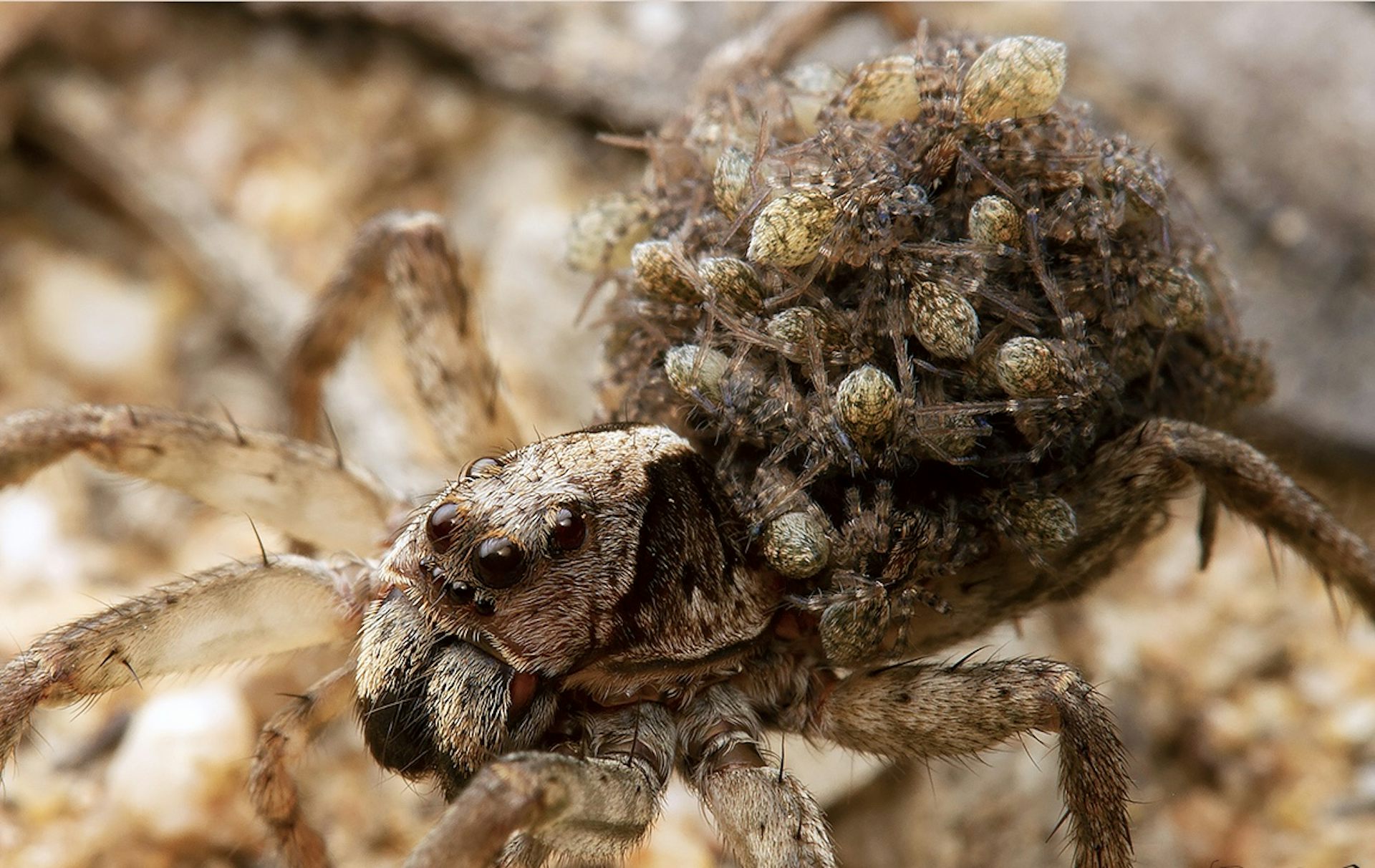 A wolf spider carrying her spiderlings.Credit: She's Got Legs/Caitlin Henderson
A wolf spider carrying her spiderlings.Credit: She's Got Legs/Caitlin Henderson - Humans need spiders to survive
It is important to remember that spiders and other invertebrates – animals without spines – make up 98% of animal species. They are vital to the functioning of ecosystems; without them, the remaining 2% of vertebrates, including humans, could not survive.
Spread the word to your friends and family that spiders should be cared for.
By all means, teach children that certain spiders require caution, and should be admired from a safe distance. But if your child has an irrational fear of spiders, address this as early as possible. Encourage positive interest in the spider world by exposing children to books and movies with spiders as the lead protagonists, such as Charlotte’s Web and Spiderman.
Research has shown that adults can overcome fear of spiders through frequent exposure. So be sure to share images of spiders with your arachnaphobic friends!
Caitlin Henderson contributed to this article.
Leanda Denise Mason, Associate Lecturer, Curtin University
This article is republished from The Conversation under a Creative Commons license. Read the original article.
How many arachnids are there, including spiders and mites? The number of arachnid species is extensive and continually being updated as new species are discovered and described. As of my last knowledge update in January 2022, there were over 100,000 described species of arachnids. This number includes spiders, scorpions, ticks, and mites. Keep in mind that the actual number could be much higher, as many species are likely yet to be discovered and documented.The number of different species of spider is truly amazing, as is the explanation for how they diversified from a shared common ancestor with scorpions, and then diversified again into spiders, mites and ticks, each adapted for its niche in the ecosystem. How this arose naturally is a fascinating area of biology and far more satisfying to learn that just parroting, "God did it!" and pretending to know, with not the slightest understanding of the processes involved.
For the most up-to-date and accurate information, it's recommended to consult the latest scientific literature or databases maintained by organizations such as the World Spider Catalog or other taxonomic authorities.
For instance, try asking a creationist the following and watch them run for the hills, shouting curses over their shoulder:
With over 100,000 known species of arachnid and more being discovered all the time, are these all the same 'kind'? If not, how many different 'kinds' of arachnid are there, on what bases are they assigned to their respective 'kind' and why are they not mentioned in the Bible? If they are all the same 'kind' so only two were on the Ark, why are so many different species found in the fossil record and what caused such a massive proliferation of species from those two survivors of the genocidal flood, in just 4,000 years?




No comments :
Post a Comment
Obscene, threatening or obnoxious messages, preaching, abuse and spam will be removed, as will anything by known Internet trolls and stalkers, by known sock-puppet accounts and anything not connected with the post,
A claim made without evidence can be dismissed without evidence. Remember: your opinion is not an established fact unless corroborated.